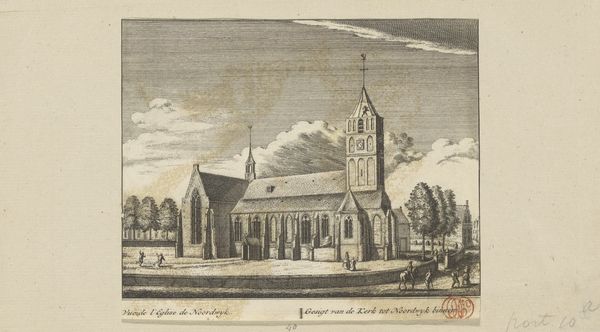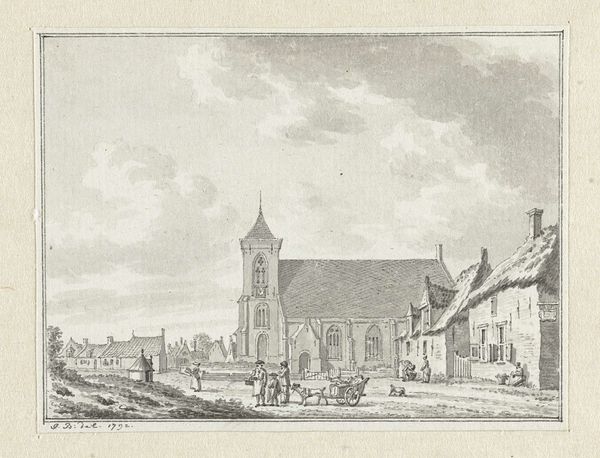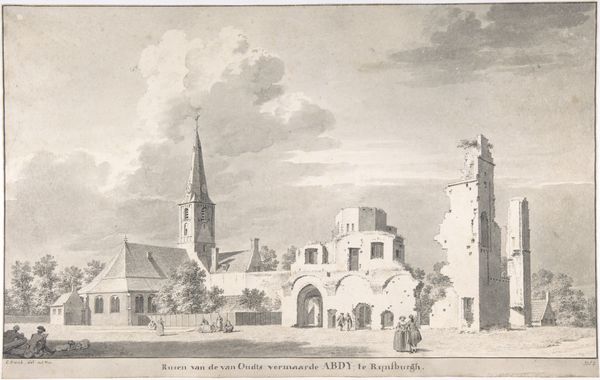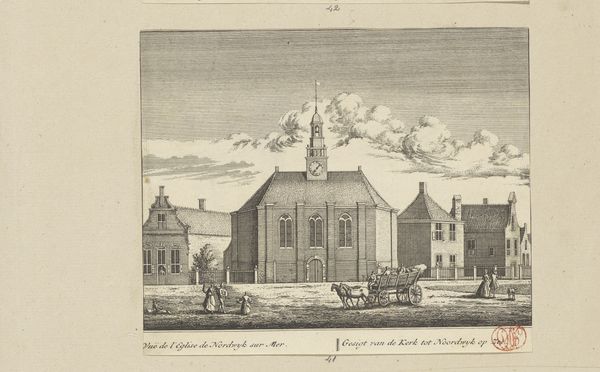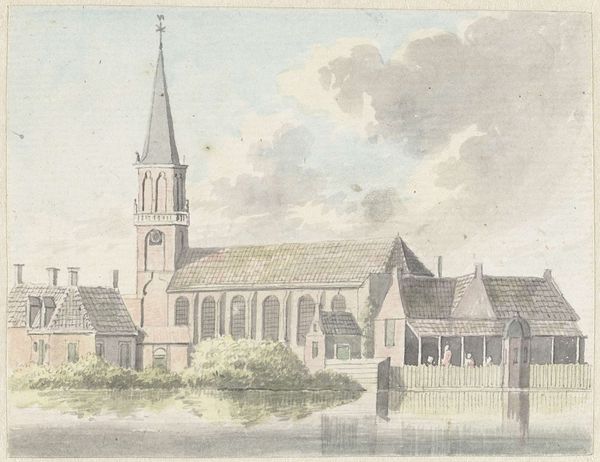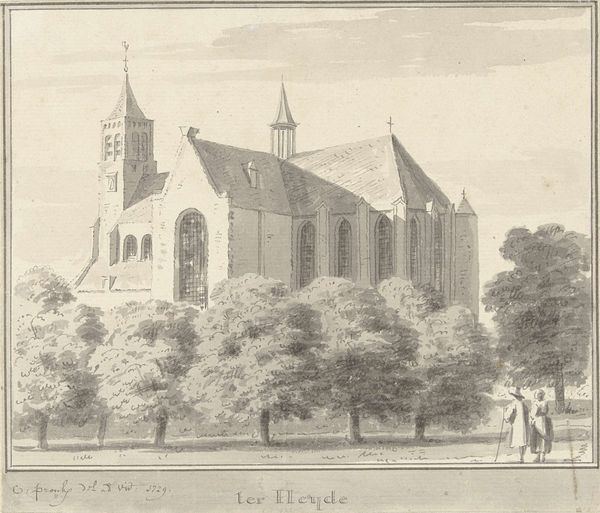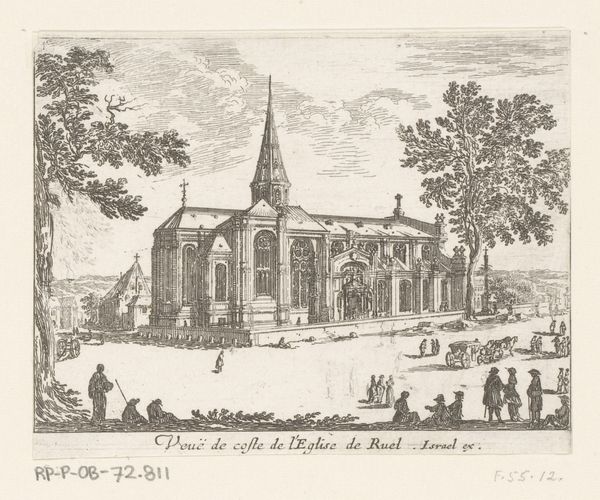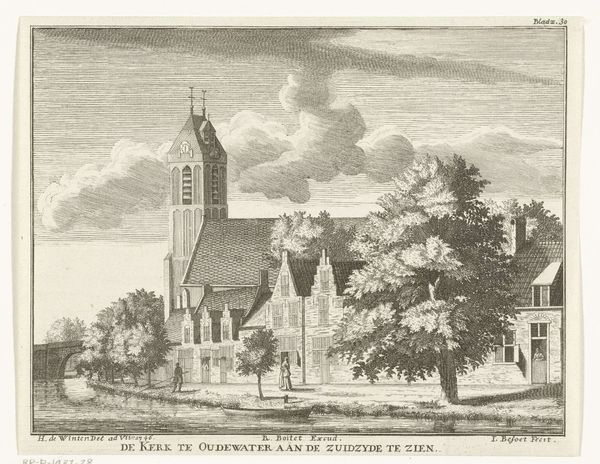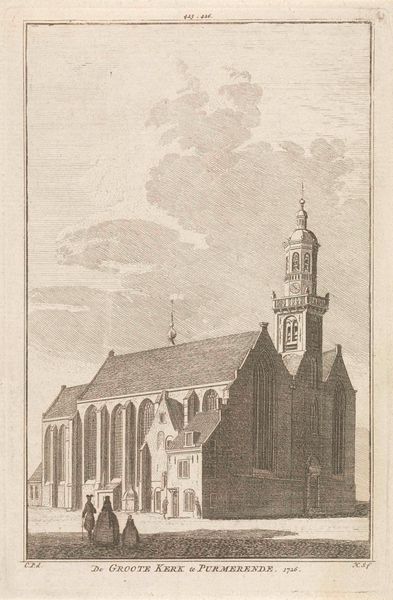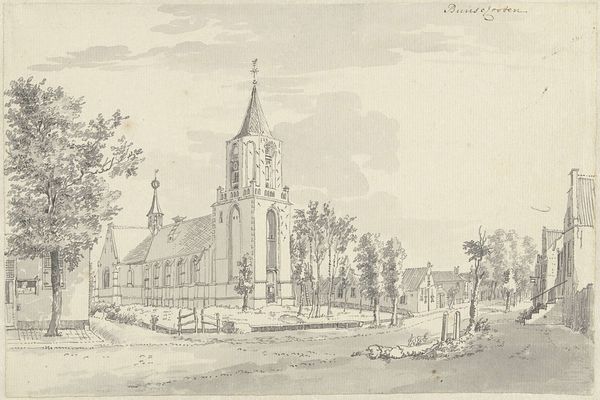
drawing, paper, ink, engraving, architecture
#
drawing
#
baroque
#
dutch-golden-age
#
landscape
#
paper
#
ink
#
cityscape
#
engraving
#
architecture
Dimensions: height 156 mm, width 182 mm
Copyright: Rijks Museum: Open Domain
Editor: This ink and wash drawing from 1729 by Cornelis Pronk depicts "De Merkendaalse of kleine kerk te Breda," or The Little Church in Breda, and it’s held at the Rijksmuseum. There’s almost a documentary feel to it; like Pronk wanted to record a specific scene. What historical details do you notice in this piece? Curator: Immediately, I see a negotiation between public and private spheres. The church, clearly a site of communal importance, is framed within an almost domestic setting, isn't it? Note the figures by the canal and their proximity to the church building itself. Are they part of a formal event, or is this merely a daily encounter? Editor: They do seem purposefully placed. Perhaps to highlight the activity of the area around the church? Curator: Precisely. This image then becomes a commentary on the integration of religious institutions within the broader urban environment. Consider also the rise of print culture at this time. Views like this one circulated widely, solidifying a particular image of Dutch cities for both local and international audiences. What stories does this circulation tell? Editor: It speaks to the accessibility of art and information in the Dutch Golden Age, showcasing civic pride but also acting as a historical record. This artwork is more than just aesthetics; it's communicating Dutch values! Curator: Exactly! We get a glimpse into the socio-political forces shaping not only the artistic output but also the identity of a nation. Did this perspective alter your perception? Editor: Definitely. I was too focused on its calm appearance and hadn't considered its broader cultural implications! Thank you. Curator: Likewise, examining it together brings the political dimension of Dutch Golden Age landscapes into sharper focus for me.
Comments
No comments
Be the first to comment and join the conversation on the ultimate creative platform.

